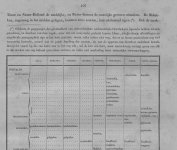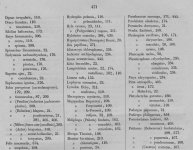Björn Bergenholtz
(former alias "Calalp")

Another update
A few less to search for ...
The following journals/books have also been delivered to James Jobling (and his HBW Alive Key):
● Anzeiger der Ornithologischen Gesellschaft in Bayern (Band II, Nr.8) ... incl. Cossyphicula Grote 1934
● Bulletins de la Société Royale de Zoologie d'Anvers (N° 15) ... incl. Kiwi Verheyen 1960
● Die Vogelarten der Erde, by Hans Edmund Wolters (1975-1982) ... incl. Oenositta, Chionomitris, Rhododendroeca, Amphispizopsis, Schistolais, Chrysominla, Strophocincla, Otocichla, Phoenicuropsis and Vauriella ... [+ Melizocincla (p.405), Dorisornis (p.413), Dorisella (p.414) and Rauenia (p.340)]
That´s it guys! That´s all I (and the libraries in Stockholm) can deliver.
Enough is enough!
Björn
A few less to search for ...
The following journals/books have also been delivered to James Jobling (and his HBW Alive Key):
● Anzeiger der Ornithologischen Gesellschaft in Bayern (Band II, Nr.8) ... incl. Cossyphicula Grote 1934
● Bulletins de la Société Royale de Zoologie d'Anvers (N° 15) ... incl. Kiwi Verheyen 1960
● Die Vogelarten der Erde, by Hans Edmund Wolters (1975-1982) ... incl. Oenositta, Chionomitris, Rhododendroeca, Amphispizopsis, Schistolais, Chrysominla, Strophocincla, Otocichla, Phoenicuropsis and Vauriella ... [+ Melizocincla (p.405), Dorisornis (p.413), Dorisella (p.414) and Rauenia (p.340)]
That´s it guys! That´s all I (and the libraries in Stockholm) can deliver.
Enough is enough!
Björn






